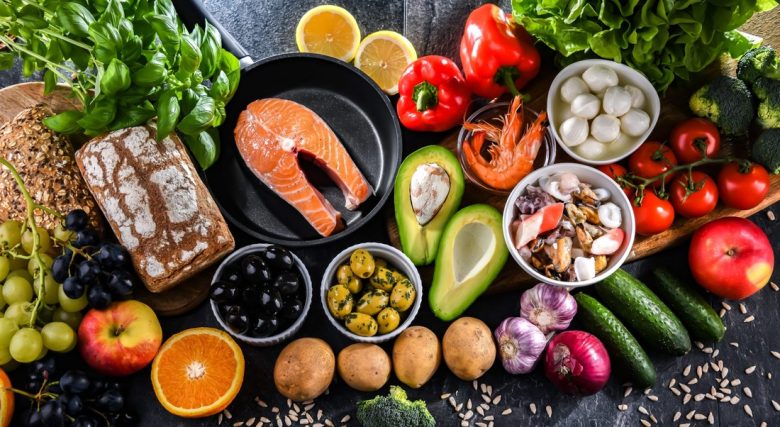Eating well is no longer just a fad; it is a way of life. With so many resources available, one can be confused regarding what healthy eating entails. But fear not! Targeting key food categories will help you satisfy and progress at the same time.
Imagine your plate as a canvas which has been filled with bright colours and an array of textures and flavours that leaves no bite without nutrients, which will make sure that different people do not feel lethargic. This voyage through the land of whole grains, lean proteins, fruits and vegetables, healthy fats and dairy is designed to help you create some nutrition-rich but tantalizing meals.
So come on; let’s get into the core reasons as to why there is need of such essential food groups in your diets daily!
Significance of Incorporating Essential Food Groups:
A balanced diet is one of the major components that people ought to focus on to improve ornamental health. Every other food group has specific nutrients that are in charge of distinct functions in the body. You are supplying your body with deficient vitamins and minerals when you consume essential food groups. This variety is what improves your immune response, hence preventing illness.
In addition, a correct diet also improves the way people think and feel. Mental performance throughout the day is affected positively by nutrients intake from multiple sources. Adoption of all food groups encourages good gut health as well. Vegetables and fruits rich in fibre are said to promote gut health as they help with gut movement.
Consuming different types of food promotes a good eating habit that is most likely to be permanent. It combines various tastes and textures while presenting a decrease in the boredom of food. It is a happiness to be healthy while eating!
Whole Grains: Why They’Should be the Order of the Day
Whole grains usually remain whole and unrefined. They contain the bran, germ, and endosperm, which makes them much more desirable than their refined counterparts. If one hurries quickly throughout their day, whole grains help them due to their high presence of fibre, which aids in digestion and sustaining energy levels. It might be especially useful for people who want to lose some weight or exercise for sugar control.
Including foods such as brown rice, quinoa, and whole wheat bread will assist you with additional nutritional benefits. Vitamin B, iron, magnesium—all of them are very important elements. Besides, whole grains have been suggested to prevent chronic diseases, such as heart disease or diabetes. Your whole health is complemented when you opt for the healthier option of whole grains rather than refined grains.
Therefore, next time when you should think about or think about your meals or snacks, ensure that whole grain choices come at the top. Your body will be grateful!
Lean Proteins:
Lean proteins are another dietary component that is aimed at a healthy body. They are very important in repairing as well as building muscles, and therefore everybody who exercises needs them. Chicken breast, fish, beans, and low-fat dairy are sources of meat that provide these amino acids but not too much saturated fat. Such moderation helps in protecting your heart and active way of living.
Moreover, it can also be advantageous by helping the people to feel full. This is very beneficial for people since manufacturers want to lower the likely discontentment arising due to food consumption. Only use lean sources of protein when adding these ingredients to your salads or wraps. Snacking can also be healthy with smoothies blended with Greek yogurt or vegetable proteins.
Do not forget, it’s important to have different proteins! Aim to have an assortment of lean proteins to ensure you reap all their benefits without getting bored of the taste.
Fruits & Vegetables: Important Food Categories for Nutrients and Fibre
No one can survive without incorporating fruits & vegetables in the diet. They contain many different minerals and vitamins as well as antioxidants, which the body seeks. Every healthy, colourful bite adds value to health in one way or another.
And last but not least, there is fibre, which is another additional advantage these foods provide. Further, it prevents constipation and keeps blood sugar levels in check. This type of ingredient will extend your sense of satiety. Also remember variety in choosing your fruits and vegetables; dark green leaves, red and black berries, and white apples all have their own unique nutrients. As a general rule, the more colours, the better.
Another factor is that raw fruits and vegetables can be used in many meals in a practical way. They can either be blended into smoothies or sprinkled among the salads in order to add some taste and freshen out the meals without extra calories. It would increase the diet in more nutritious and pleasurable way.
Healthy Fats: The Good, the Bad, and the Ugly
Fats have often been considered poisonous for the body and people have been told to avoid taking them. But that is not right, as they have equally important function in the body. One picture is bad and another picture is good. It is critical to know what distinguishes the two.
Avocados, nuts, and olives contain healthy fats which nourish the brain and boost the absorption of vitamins. They assist in regulating weight without bad cholesterol. Our cooking is very delicious and nutritious due to these.
Moreover, artificial trans fats and the large amount of saturated fats cause harm directly to the heart. Such things are usually found in processed food, in fried items, and baked goods. These fats are a factor in contracting and it is related to other chronic disease risks. And of course, moderation is key. Enjoy the good ones and limit the bad ones for active living and overall better health. And your body will repay you with energy and vivacity!
Dairy and Calcium: Contribution towards Strong Bones
Dairy is conspicuous for the presence of the mineral calcium in abundance, which assists in the proper development of bones. Physical activities of milk, yogurt, and cheese considerably increase women’s and men’s daily consumption of that vital mineral to a degree. It contributes to the mass of bones by acting on calcium density. These are the years where the skeletal system health is constructed, which makes it significant in childhood and adolescence.
Dairy foods also provide vitamin D and protein that are needed for the strength of bones. It helps efficiently use calcium inside the body and on its own strengthens bones. Fortified dairy-free alternatives can be available for people with lactose intolerance. Calcium-enriched soy yogurt or almond milk could give the same benefits.
Building a balanced diet that consists of food cereals that have dairy content is beneficial to your bones and is also very yummy—how about rich smoothies and cheesy pastas for instance!
How to Include All Food Groups in Your Diet?
It is possible to add all the food groups in your diet without any difficulty or hassle. If proper planning is done, this step is necessary so as not to forget or neglect entire groups of foods. For every meal, aim to have fresh produce, fruits, and vegetables fill up half the plate. Their bright aesthetic value is not the only satisfying feature of this food group; they are also rich in vitamins and minerals. Work with whole grain options these days rather than refined ones. Quinoa, brown rice, and whole grain pasta are healthy options that will help spice things up
A few times a week, make sure you eat the vegetarian proteins, such as beans or lentils. They’re flexible and often cheaper than meat. Snacking smartly is key too. Store nuts or yogurt in your bag for healthy snacking options because they will provide energy in the form of fats and proteins. Cook things differently. You can try dishes that use a variety of food groups together—smoothies are great for mixing fruits, vegetables, and protein.
Conclusion:
balanced diet is not a destination; it is a venture which is being taken on a daily basis. Every choice counts. Whenever the basics are included, they make sure that the body does what it is supposed to do and does it well. Each group has its function when it comes to one’s health and wellness promotion. Trying out new food combinations can be fun and entertaining. Try different cuisines that include whole grains or lower cuts of meat.
Balance does not mean achieving of perfection, rather moderation and diversity of food items. Identify what your body needs and such types of foods that it does not want. The most important thing is that you have fun while doing it. Dining with people can help make it fun. Be ready to embark on this journey to better nutrition, one bite at a time!
FAQs:
1. What are the main food groups for a balanced diet?
Balanced nutrients: quality carbohydrates from whole grains; good quality protein from lean cuts of meat, fruits, vegetables and healthy oils; and calcium. Most of these groups assume types of nutrients that are important for body activities.
2. How do I know if I am eating enough of each food group?
There are food diaries kept to check intake. Generally, half of the plate consists of vegetables and fruits when meals are taken along with appropriate carbohydrates and proteins.
3. Is it possible to have a few yummy snacks even when working hard to achieve a balanced diet?
Of course! Moderation is the answer. Ideally, you should only treat yourself occasionally with energy-dense foods, which are beneficial to your healthy regime.
4. Do vegetarians and vegans get enough nutrition from a plant-based diet?
Not necessarily. It is possible to fulfill all the dietary requirements by maintaining a simplified nutrition structure of legumes, nuts, seeds, whole cereals, fruits, and vegetables.
5. If I follow a healthy eating pattern, how many servings from each food group should I have within a day?
Instead of trying to consume one or two food groups from one meal, make it a point to include foods from every major food group for every meal throughout the day. Such meals make it possible for the body to receive different nutrients in a healthy way.




